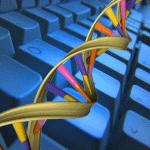Bioinformatics
|
30 july 2014 06:05:18 |
| Network features suggest new hepatocellular carcinoma treatment strategies (BMC Systems Biology) |
|
Tweet Background:
Resistance to therapy remains a major cause of the failure of cancer treatment. A major challenge in cancer therapy is to design treatment strategies that circumvent the higher-level homeostatic functions of the robust cellular network that occurs in resistant cells. There is a lack of understanding of mechanisms responsible for the development of cancer and the basis of therapy-resistance mechanisms. Cellular signaling networks have an underlying architecture guided by universal principles. A robust system, such as cancer, has the fundamental ability to survive toxic anticancer drug treatments or a stressful environment mainly due to its mechanisms of redundancy. Consequently, inhibition of a single component / pathway would probably not constitute a successful cancer therapy.
Results:
We developed a computational method to study the mechanisms of redundancy and to predict communications among the various pathways based on network theory, using data from gene expression profiles of hepatocellular carcinoma (HCC) of patients with poor and better prognosis cancers. Our results clearly indicate that immune system pathways tightly regulate most cancer pathways, and when those pathways are targeted by drugs, the network connectivity is dramatically changed. We examined the main HCC targeted treatments that are currently being evaluated in clinical trials. One prediction of our study is that Sorafenib combined with immune system treatments will be a more effective combination strategy than Sorafenib combined with any other targeted drugs.
Conclusions:
We developed a computational framework to analyze gene expression data from HCC tumors with varying degrees of responsiveness and non-tumor samples, based on both Gene and Pathway Co-expression Networks. Our hypothesis is that redundancy is one of the major causes of drug resistance, and can be described as a function of the network structure and its properties. From this perspective, we believe that integration of the redundant variables could lead to the development of promising new methodologies to selectively identify and target the most significant resistance mechanisms of HCC. We describe three mechanisms of redundancy based on their levels of generalization and study the possible impact of those redundancy mechanisms on HCC treatments. |
| 59 viewsCategory: Bioinformatics |
 A Wavelet Approach to Detect Enriched Regions and Explore Epigenomic Landscapes (Journal of Computational Biology) A Wavelet Approach to Detect Enriched Regions and Explore Epigenomic Landscapes (Journal of Computational Biology)Shapes of Interacting RNA Complexes (Journal of Computational Biology) 
|
| blog comments powered by Disqus |
MyJournals.org
The latest issues of all your favorite science journals on one page
The latest issues of all your favorite science journals on one page



